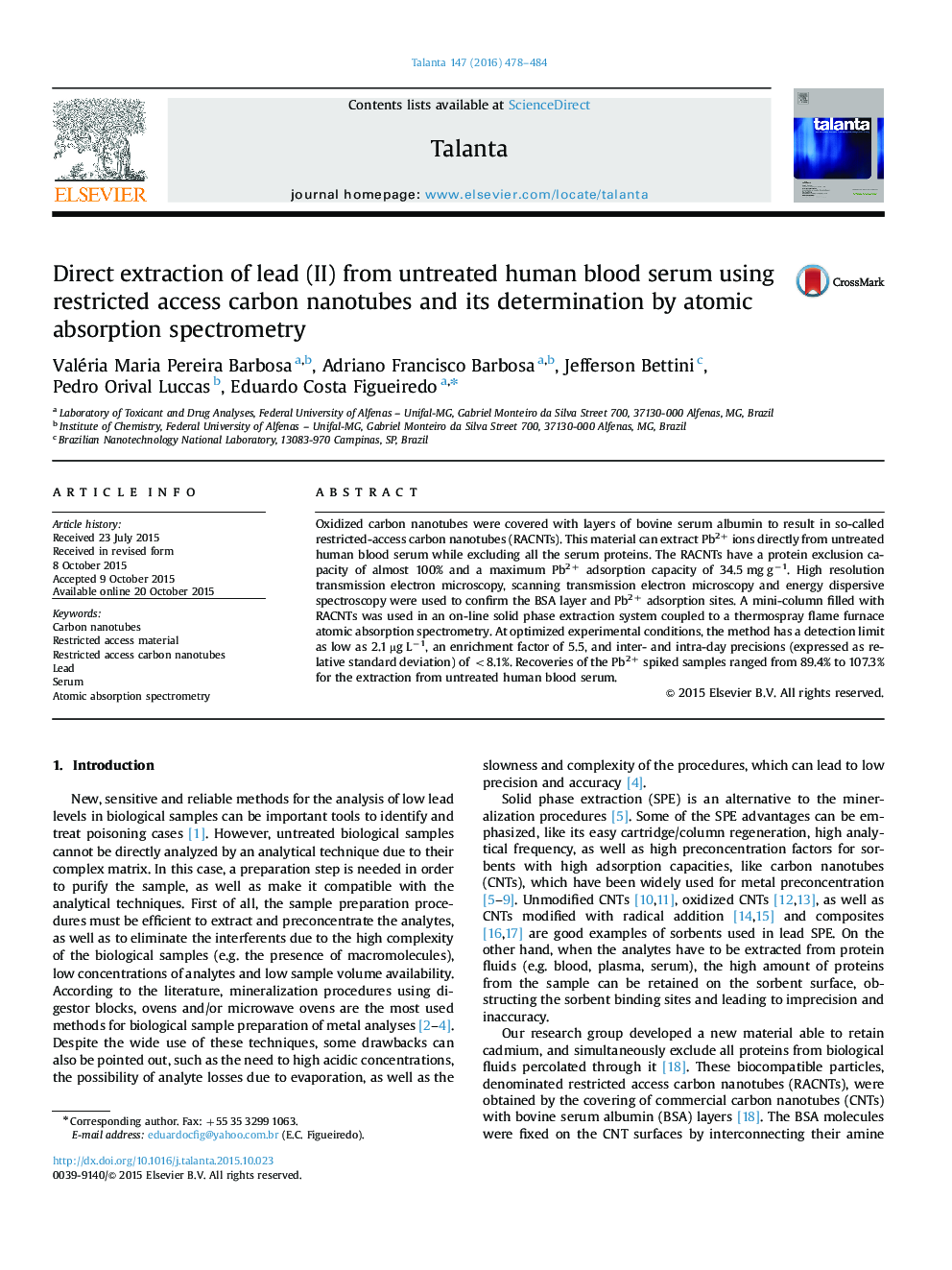| Article ID | Journal | Published Year | Pages | File Type |
|---|---|---|---|---|
| 1242784 | Talanta | 2016 | 7 Pages |
•Metal bind sites of the restricted access carbon nanotubes (RACNTs) were mapped.•RACNTs were able to extract lead and to exclude all proteins from the samples.•Proteins were excluded by electrostatic repulsion.•A method was suitably validated for the lead analysis from human serum samples.
Oxidized carbon nanotubes were covered with layers of bovine serum albumin to result in so-called restricted-access carbon nanotubes (RACNTs). This material can extract Pb2+ ions directly from untreated human blood serum while excluding all the serum proteins. The RACNTs have a protein exclusion capacity of almost 100% and a maximum Pb2+ adsorption capacity of 34.5 mg g−1. High resolution transmission electron microscopy, scanning transmission electron microscopy and energy dispersive spectroscopy were used to confirm the BSA layer and Pb2+ adsorption sites. A mini-column filled with RACNTs was used in an on-line solid phase extraction system coupled to a thermospray flame furnace atomic absorption spectrometry. At optimized experimental conditions, the method has a detection limit as low as 2.1 µg L−1, an enrichment factor of 5.5, and inter- and intra-day precisions (expressed as relative standard deviation) of <8.1%. Recoveries of the Pb2+ spiked samples ranged from 89.4% to 107.3% for the extraction from untreated human blood serum.
Graphical abstractFigure optionsDownload full-size imageDownload as PowerPoint slide
